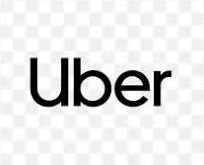Buying or selling a property is a complex process, but things become more difficult when it’s deemed unmortgageable.
An unmortgageable property is one for which a secured lender will not approve long-term mortgage finance due to one or more risk factors. The risk factors that label a property ‘unmortgageable’ frequently arise during the survey/valuation process.
As Stephen Clark, from Finbri bridging loans, explains, “When a property is labelled ‘unmortgageable’ it’s usually due to either physical or legal risks. When an RICS report highlights one or more of these risks, a mortgage lender can refuse to collateralise a loan, making it much more difficult to sell the property. As most buyers nowadays seek mortgage financing, having an unmortgageable property can be a financial burden unless you’re a seasoned developer with the appropriate financing.”
To help identify potential risks, we’ve highlighted why a property can be deemed unmortgageable.
The house is uninhabitable.
Traditional banks and building societies will not provide a mortgage on a property where people cannot live. A property is uninhabitable if it’s derelict, partially derelict, not weatherproof, or not secure.
Properties that do not have a kitchen or a bathroom.
A property that lacks either of these necessities will not qualify for a mortgage. Some lenders may also refuse to lend on a property with inadequate or non-existent heating.
Properties with structural issues.
Structural issues are one of the main issues that adjudge property to be unmortgageable. The most common type of structural issue is subsidence damage. Other structural problems include a lack of a damp-proof course, wall tie failure, and red ash flooring or concrete floors that are susceptible to sulphate attack.
Non-standard construction properties
Most modern properties are made of brick or stone with a tile or slate roof and are considered ‘standard construction’. Non-standard properties that are a higher risk to lenders include:
- Flat roofs
- Properties with wooden or steel frames
- High-rise apartments
- Properties with walls made of glass or concrete
- Listed buildings
- Prefabricated buildings
- Flats above shops
- Barn conversions
- K-Lath homes
- Houses made with cob
- Properties with wooden or steel frames
Properties with unknown cladding
After the tragic events of Grenfell Tower in June 2017, mortgage lenders will refuse to mortgage a property unless they can identify which type of cladding has been used. Many buildings don’t have these records, which increases the risk for the lenders.
Japanese knotweed
Many lenders will refuse a mortgage if Japanese knotweed or other invasive weeds are discovered growing on the property or nearby. Japanese knotweed spreads quickly and has the potential to cause structural property damage.
Severe damp, dry rot, and wet rot
All of these are considered structural flaws that can render a property unmortgageable.
Properties at risk of subsidence or flooding
Properties may be unmortgageable even if they have not been flooded or have not experienced subsidence, but are at risk of it. Subsidence is a particular concern in ex-coal mining areas or in coastal locations.
Low-cost and low-value properties
Most lenders will not provide mortgages for less than £40,000 or £50,000, so properties worth less than this amount cannot be mortgaged.
Most lenders will not consider lending on a leasehold flat or house where the lease is short, typically those of less than 70 years.
Planning permission or building regulations approval is missing or incomplete.
Lenders might deny a mortgage if a property (or part of it) was built without planning permission. A lender may reject your application if your property has had specific building work done that does not have building regulations approval from the local council, and you do not have a certificate of compliance to prove it.
Commercial or partially commercial properties
A standard residential mortgage will not usually be available if your property is commercial or partially commercial. For example, if your property is above or next to a shop.
High-rise apartments
A mortgage may be difficult to obtain if your property is in a high-rise flat or tower block. Many traditional banks and building societies refuse mortgages for multi-story buildings, as they are seen as higher risk. This is because if something were to go wrong with the building – such as a fire – it would be much more difficult to evacuate than a lower-rise property.
Council housing or social housing
Mortgage lenders may be hesitant to provide financing on a property if it is located within a high concentration of social housing. Due to the potential threat posed by noise pollution and anti-social behaviour, people are much less likely to want to purchase a home in this type of area.
If you’ve never had your property registered with the Land Registry.
Lenders will not offer a mortgage if you don’t have any property title deeds unless the property’s ownership is proven and registered with the Land Registry.
Flying and creeping freeholds
A flying or creeping freehold is where a portion of your property crosses over or under a neighbour’s property, or vice versa. In a terraced house, for example, a bedroom above a neighbour’s living room. A mortgage may be refused or granted only if the flying freehold is within certain size constraints.
Properties with high or increasing ground rents
If the ground rent equates to a substantial amount; usually hundreds or thousands of pounds a year, or rises dramatically every 10/20 years, mortgageability may suffer.
Properties subject to restrictive covenants
Restrictive covenants are legally binding conditions written into a property’s deeds or contract by a seller to specify what a homeowner can and cannot do with their house or land under certain conditions. They can cover a wide range of topics, but the most common examples are:
- preventing property owners from making changes (such as building an extension or converting a house into flats)
- preventing the construction of buildings or other structures on a plot of land
- preventing trades or businesses from being able to operate on the land
Major development work underway
Lenders may be wary of lending if there are plans for significant development work nearby, such as a new road, a new railway (such as HS2), or airport expansion.
Is there a way to sell an unmortgageable property?
If a property is deemed unmortgageable, there are still options for selling it. You could consider correcting the issue(s) that made it unmortgageable. Refurbishment work or renovation may be necessary, which could be initially financed with a bridging loan and then when the works are completed a longer term financial solution like a mortgage is obtained and the bridging loan can then be repaid.
The other option is to sell the property to a cash buyer. A development business or individual will have the funds to purchase your property outright, eliminating the need for a mortgage. Property developers will actively seek unmortgageable property for sale to get a good deal on a property they can renovate or ‘flip’.
 Newspatrolling.com News cum Content Syndication Portal Online
Newspatrolling.com News cum Content Syndication Portal Online







